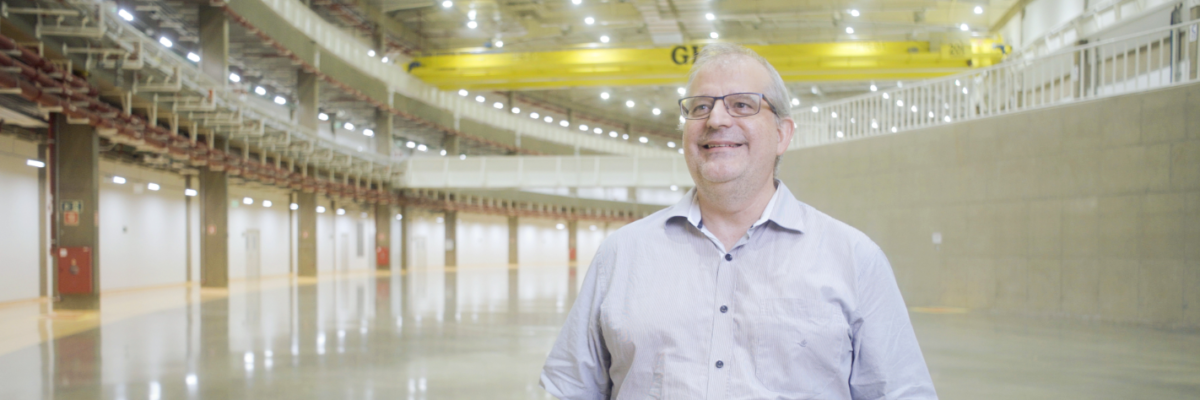Antonio José Roque da Silva – CNPEM Director-General
A retrospective: 2020–2021
The years 2020 and 2021 revealed themselves to be atypical as well as challenging; when the coronavirus pandemic exploded onto the scene in March 2020, social distancing and quarantine measures were put in place to stop the spread of Covid-19 which also impacted operations and activities at public and private organizations around the world. CNPEM established a series of actions and routines primarily to ensure the safety of its staff, while also attempting to minimize negative effects on its projects and activities. In this way, part of CNPEM’s open facilities began to remotely carry out research projects from external users, with the Center’s internal team receiving samples and conducting experiments. A pilot version of CNPEM’s Online Institutional Visit Program was also created, to allow people from outside the community to continue to get to know some of the Center’s facilities. In terms of science, technology, and innovation, the unforeseen effects of the pandemic led countries to redirect their priorities and R&D agendas, diverting efforts and resources toward the fight against Covid-19. In Brazil, the Ministry of Science, Technology, and Innovation (MCTI) mobilized research units, laboratories, and science and technology institutes across the country to create the Rede Vírus MCTI to fight the novel coronavirus. Within this network, CNPEM was responsible for indicating previously available pharmaceuticals with potential applications against Covid-19 (a process known as drug repurposing). Also, as part of this same network, CNPEM developed and produced its own face shield. In October 2020, a ceremony officially acknowledged the start of research utilizing the Sirius electron accelerator, with Brazil’s President and the Minister of Science, Technology, and Innovation present. In 2021, the beamlines in phase 1-A (Manacá, Cateretê, Carnaúba, Mogno, Ipê, Ema, and Imbuia) were installed and commissioned, and the construction and installation of the 1-B beamlines ( Cedro, Sapê, Quati, Jatobá, Paineira, Sabiá, and Sapucaia) began. The Manacá beamline, which is currently undergoing scientific commissioning, has received several fast-track research proposals, following the limitations on the number of external visitors to campus. Since the start of its commissioning, Sirius has already revealed 12 protein structures and provided data for an initial article published by its users in the
Journal of Molecular Biology. Internal research activities at CNPEM also make important findings possible. Notable among these is the publication of the Mayaro virus structure in Nature Communications. This was the first description of a virus structure researched entirely in Brazil, using cryomicroscopy with the recently commissioned Titan Krios G3 cryomicroscope. Another important outcome is the study that revealed the molecular mechanisms of an enzyme involved in the breakdown of xylan, one of the main components of hemicellulose, which was also published in Nature Communications. CNPEM’s efforts to support a competitive research environment include
i) study to renovate and construct new biosafety level 2 and 3 laboratory rooms (BSL-2 and BSL-3) and acquire equipment within the scope of CNPEM’s Platforms to Combat Emerging Viruses (PCVE) project;
ii) startup of the Nanotoxicology and Nanosafety facility (Nanotox), which features level 2 biosafety to serve external users, and acquisition of a new Thermo Fisher Scientific SCIOS 2 double-beam electron microscope, in order to continue expanding the competencies and infrastructure of the Brazilian Nanotechnology National Laboratory (LNNano) within the scope of the Brazilian National Nanotechnology Laboratory System (SisNANO);
iii) concluding the construction of four new clean rooms at LNNano for nanomanufacturing of materials, with the support of FAPESP and FINEP, also within the scope of SisNANO.
Finally, 2021 marked the opening of the Ilum School of Science, with the completion of an institutional development plan and curriculum for the course, installation of the furniture and internal infrastructure for classes and common space, books in the library, equipment for the physics, chemistry, and biology laboratories, and a data-transmission network structure, and evaluation of the project by the Anísio Teixeira National Institute for Educational Studies and Research (INEP, an agency linked to the Ministry of Education and Culture, responsible for evaluating educational institutions), which awarded the highest possible score to the school. As we faced enormous challenges, we had support and guidance from CNPEM’s Board of Directors, the Ministry of Science, Technology, and Innovation (MCTI), and the Management Contract Oversight and Assessment Committee.

